
 For English version please click here
For English version please click here
In occasione del MagnaModena che si è tenuto domenica 8 febbraio abbiamo avuto la possibilità di effettuare alcune misure sulla quantità di illuminazione prodotta da varie tipologie di lampade per acquario.
Per farlo ci siamo avvalsi di un misuratore di Par Light Meter Li-Cor Li 250A e di un luxmetro HD9221.
Le lampade oggetto della nostra misurazione sono state:
- Lumenarc III con bulbo HQi BLV 400w da 10.000°K
- E-Power con bulbo HQi Elos Spectra 250w da 10.000°K
- E-lite con 18 led da 64w
- Plafoniera commerciale con 2x24w PL da 10.000°K
Per leggere i risultati delle prove cliccate sulla foto sopra o nel seguente link: I risultati delle misurazioni
At the MagnaModena held Sunday February 8, we had the opportunity to undertake certain measures of the amount of light produced by various types of lamps for aquarium.
To do this we used a light Meter Li-Cor Li 250A and a Lux Meters HD9221.
The measured lamps have been:
- Lumenarc III with bulb HQi BLV 400w of 10.000°K
- E-Power with bulb HQi Elos Spectra 250w of 10.000°K
- E-lite with 18 led and 64w
- Commercial Light with 2x24w PL of 10.000°K
You can read the article and view our measurement by clicking here: The results
Premetto che questa prova non ha pretesa di validità assoluta, a causa dei molteplici fattori che hanno concorso a costruirla. Però può essere altresi interessante per i valori misurati che abbiamo visto e che sicuramente dovranno essere interpretati.
Eravamo un gruppo di amici ed acquariofili che non ci aspettavamo tale prova e quindi non avevamo neanche pensato a cosa chiedere di fare per poter capire meglio le interazioni fra le varie soluzioni messe a nostra disposizione.
Per cominciare abbiamo avvicinato due tavoli e posto fra di essi una lastra di vetro extrachiaro sulla quale abbiamo posato le varie lampade.
La misurazione è stata effettuata sul pavimento, a circa 78 cm di distanza dal vetro.
I due bulbi HQi erano nuovi e sono stati estratti dalle rispettive scatole e poi montati. La misurazione si è protratta per circa 10 minuti fino a quando il risultato del misuratore di PAR era stabile, e quindi si presume che il valore misurato fosse più o meno quello di riferimento.
Abbiamo cominciato con il Diamond Lumenarc III in cui abbiamo inserito una lampadina BLV da 400w con attacco E40, non conosco in questo momento il tipo di ballast impiegato, se lo verrò a sapere o se qualcuno che c’era l’ha chiesto integrerò l’articolo.
Il risultato della misurazione è stato il seguente:
A 78 cm in posizione disassata il Lumenarc III con BLV da 400w ha fornito una misurazione PAR di 307 µmoli/M2/s. Purtroppo non ho altre foto, ma posso assicurare che il valore era abbastanza costante anche spostando il misuratore di PAR.
A questo punto abbiamo collegato la E-power, con bulbo Elos Spectra da 10.000°K. Da notare che vi erano due vetri fra il bulbo e la zona di misurazione.
Poi abbiamo collegato la lampada a led E-lite, con 18 led da 3w per un totale di circa 64w. Anche in questo caso vi erano due vetri fra i led e la zona di misurazione.
Infine una plafoniera commerciale con due pl da 24w, di cui non conosco altre caratteristiche
A me i risultati hanno sorpreso. E’ vero che tempo fa effettuai una prova fra Lumenarc III ed E-power da 150w ed i valori erano comparabili, ma non mi aspettavo una differenza tanto netta fra due wattaggi così diversi. Certo bisogna considerare che il Lumenarc ha una parabola più ampia di illuminazione, mentre l’Epower più stretta, ed in tutta la sua parabola, perlomeno nello spazio compreso fra i tavolini, attorno ai 50 cm, il valore era stabile, mentre la E-power aveva meno potenza in centro rispetto quanta ne avesse ai bordi. Ma in ogni caso il valore al centro era pari a quella del Lumenarc e BLV mentre ai bordi il valore era nettamente superiore con una lampadina che ha il 37,5% in meno di potenza.
Sarebbe carino ripetere la prova in funzione di parametri più controllati, con diverse lampadine, e fare anche una ipotetica area di copertura… ma già la prova fatta secondo me è molto indicativa.
Ai fini di un calcolo statistico e solo per quello, assumo come valore medio della E-power la media fra le due misurazioni ed ottengo la seguente tabella, largamente indicativa:
| Combinazione | Consumo in watt | PAR µmoli/M2/s | PAR µmoli/M2/s per Watt |
| Diamond Lumenarc III con BLV da 400w | 400 w | 307 | 0,77 |
| E-Power con Elos Spectra da 250w | 250 w | 382 (max 449 min 315) | 1,53 (max 1,8 min 1,26) |
| E-lite | 64 w | 30 | 0,47 |
| Pl da 39w | 48 w | 15 | 0,31 |
Non essendo sicuro di quale fosse l’unità di misura non ho riportato nulla, ma aggiornerò il file appena saprò quale unità di misura è stata usata.
Quali sono i vostri commenti?
The results of the measurements
This test has no claim to absolute validity, because of many factors that have helped to build it. But can also be of interest to the measured values we have seen and certainly that should be interpreted.
We were a group of friends and aquarium keepers that we were not expecting this test and then we had not even thought to ask what to do in order to better understand the interactions between the various solutions available to us.
To begin, we took two tables and place over them a glass plate on which we have laid the various lamps.
The measurement was carried out on the floor, about 78 cm away from the glass.
The two HQI bulbs were new and were extracted from their respective boxes and then mounted. The measurement lasted for about 10 minutes until the outcome of the gauge of PAR was stable, and therefore it is assumed that the measured value was more or less than the reference.
We started with the Diamond Lumenarc III in which we put a light bulb from BLV 400W E40, I do not know at this time the type of ballast used, if I’ll come to know or if someone will tell me I’ll incorporate into the article.
The measurement result was as follows:
78 cm from glass, not in a center position, the Lumenarc III and BLV 400W provided a measurement of PAR of 307 µmoli/M2/s. Unfortunately I have not other photos, but I can assure that the value was fairly constant even moving the meter PAR.
Then we connected the E-power, with bulb Elos Spectra 10,000 ° K. Note that there were two glass between the bulb and the area of measurement.
Then we connected the LED lamp E-lite, with 18 LED 3w for a total of about 64w. In this case there were two glass between the LED and the area of measurement.
Finally a commercial lamp with 39W pl, of which I don’t know other features. Also here we had two glasses from lamp to floor.
I was surprised by the results. It’s true that long ago I made a test between Lumenarc III and E-power 150w and the values were comparable, but I was expecting more difference between two such different wattages. Certainly we must consider that the Lumenarc parable has a wider range of lighting, while the ePower closer, and throughout his parable, at least in space between the tables, around 50 cm, the value was stable while the E-Power had less power in the center as it had the edge. But in any case the value at the center was equal to that of BLV Lumenarc and at the edges the value was much higher with a light bulb that has 37.5% less power.
It would be nice to repeat the test as a function of parameters tested, with different bulbs, and then drawing an hypothetical area of coverage … but the test done in my opinion is very indicative.
For the purpose of a statistical calculation and only for them, take as the average value of the E-Power average between the two measurements and get the following table, largely indicative:
| watt consumption | PAR µmoli/M2/s | PAR µmoli/M2/s for every watt | |
| Diamond Lumenarc III with BLV of 400w | 400 w | 307 | 0,77 |
| E-Power with Elos Spectra of 250w | 250 w | 382 (max 449 min 315) | 1,53 (max 1,8 min 1,26) |
| E-lite | 64 w | 30 | 0,47 |
| Pl of 39w | 48 w | 15 | 0,31 |
What are your comments?







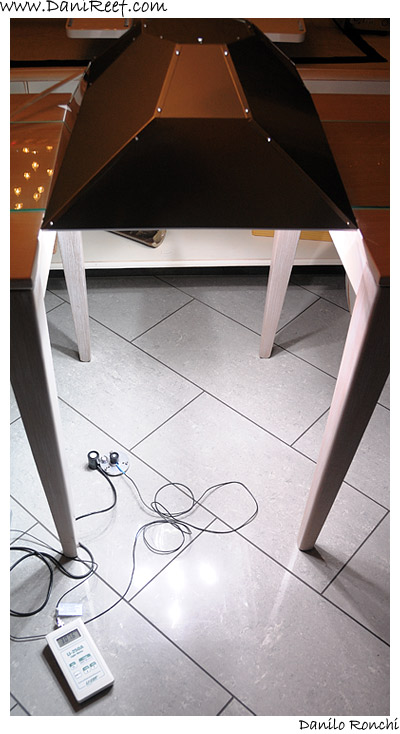
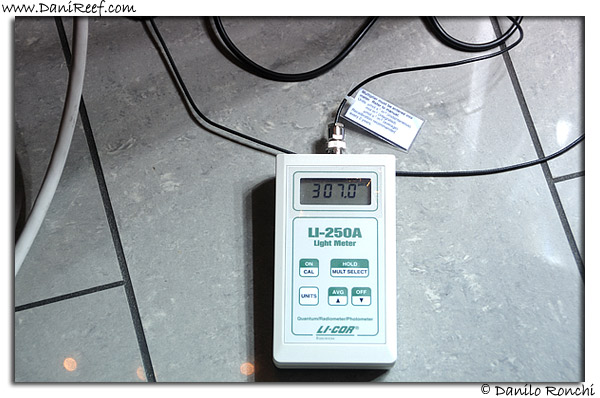
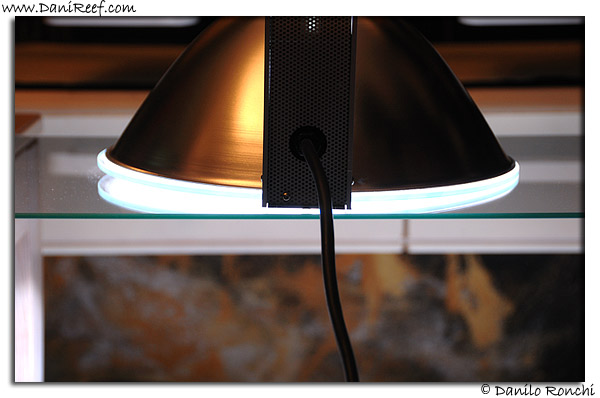
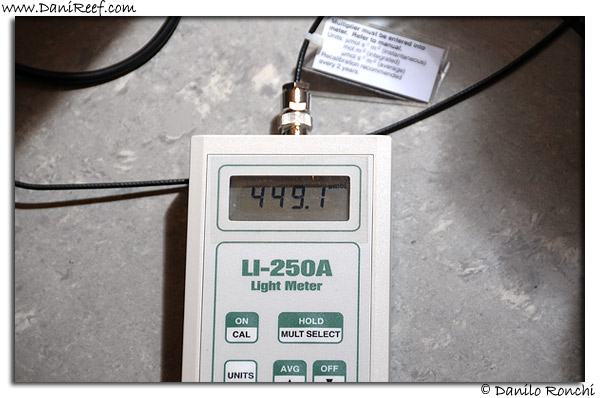
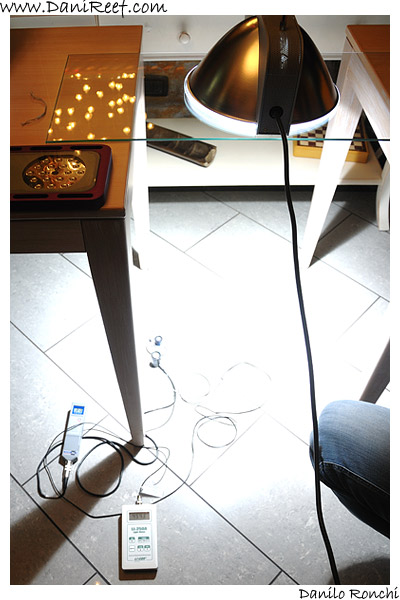
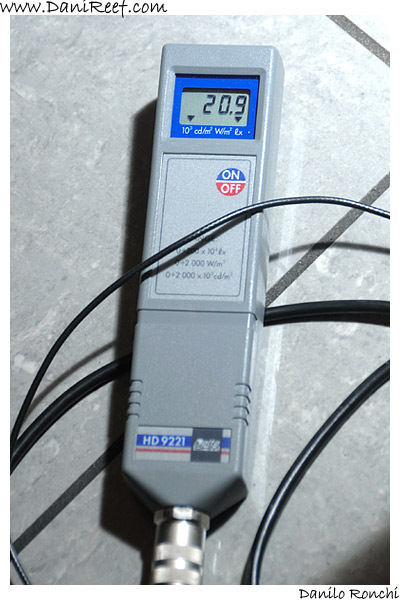
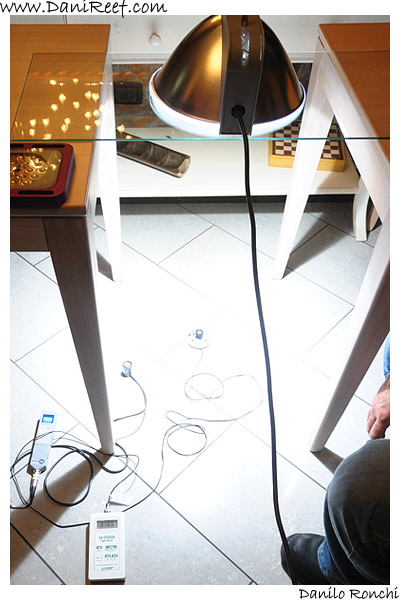
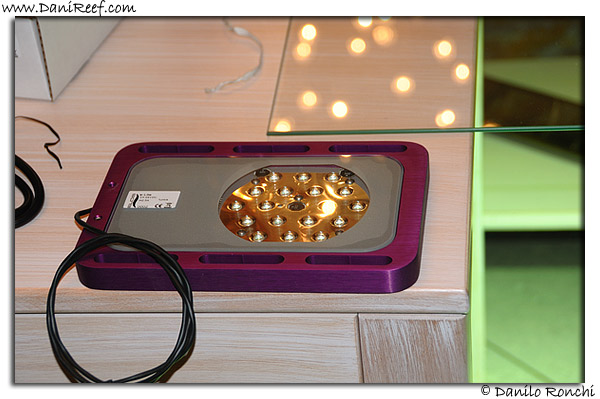
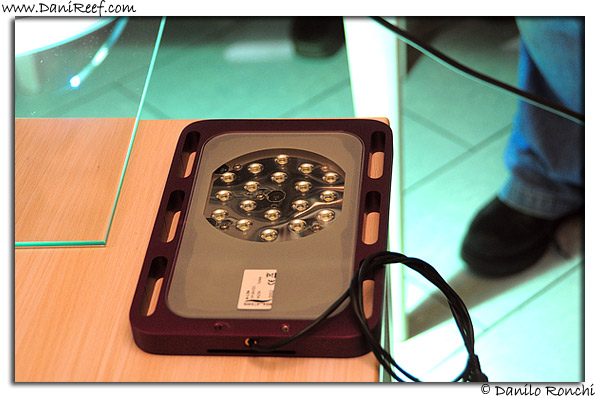
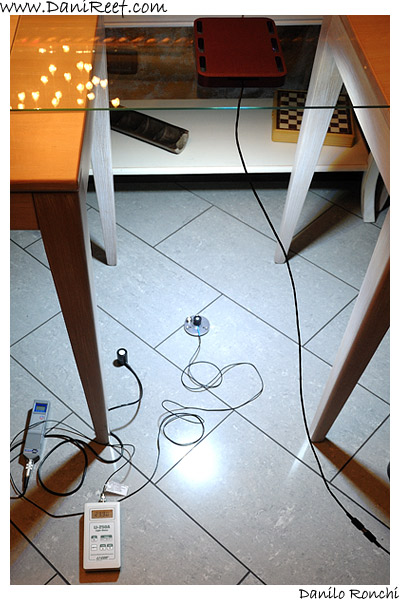
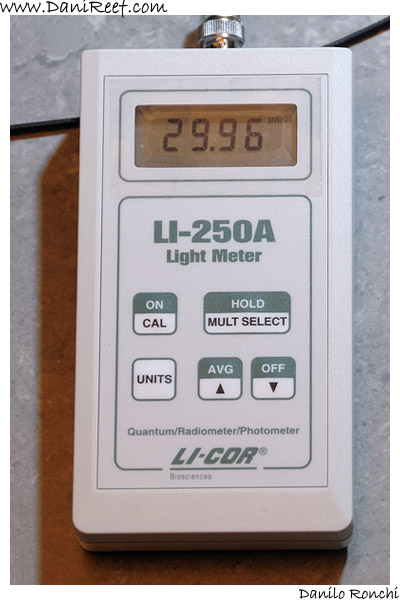
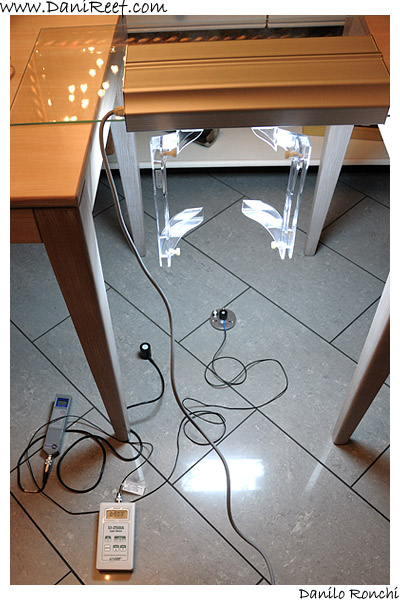
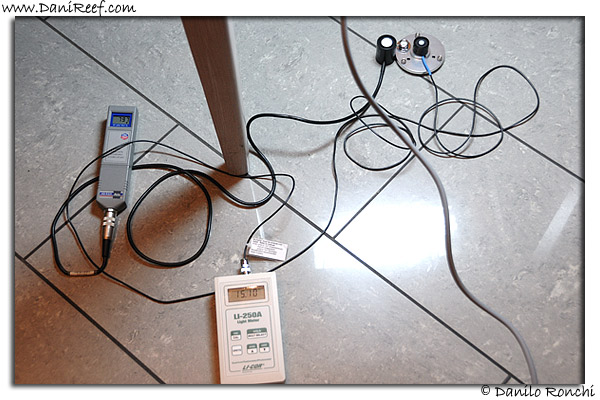

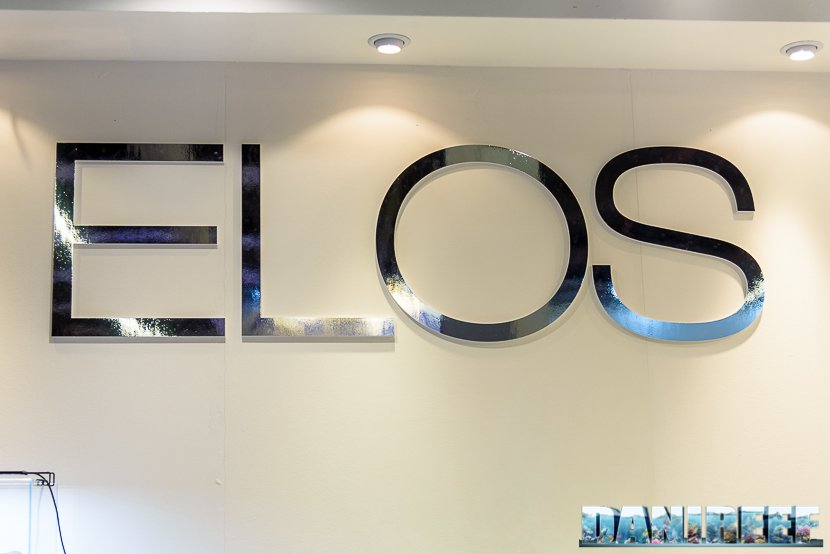

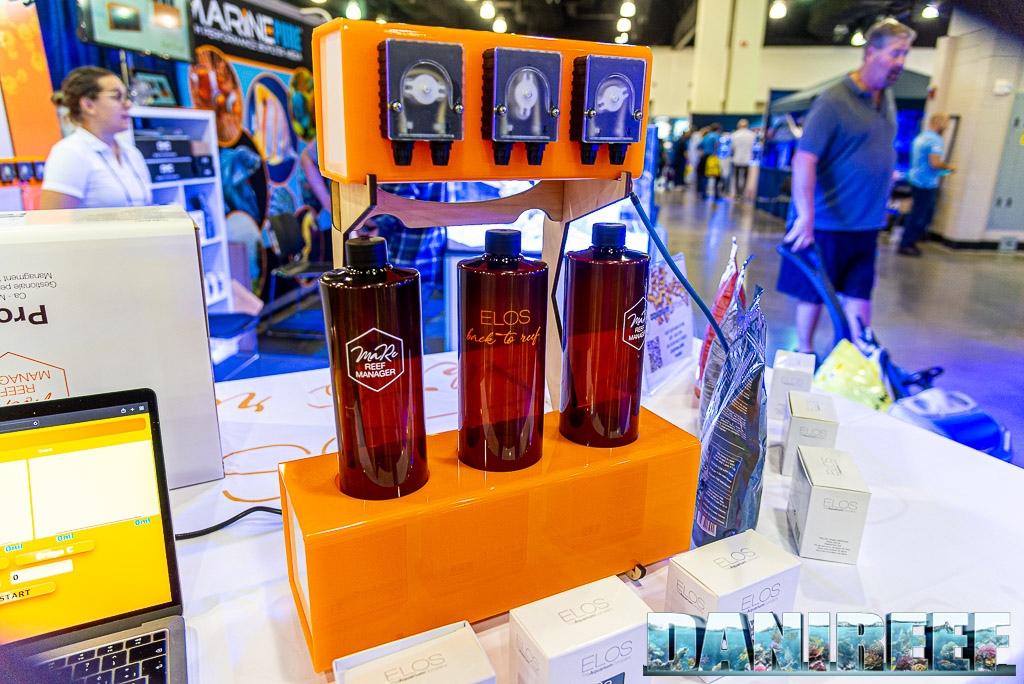

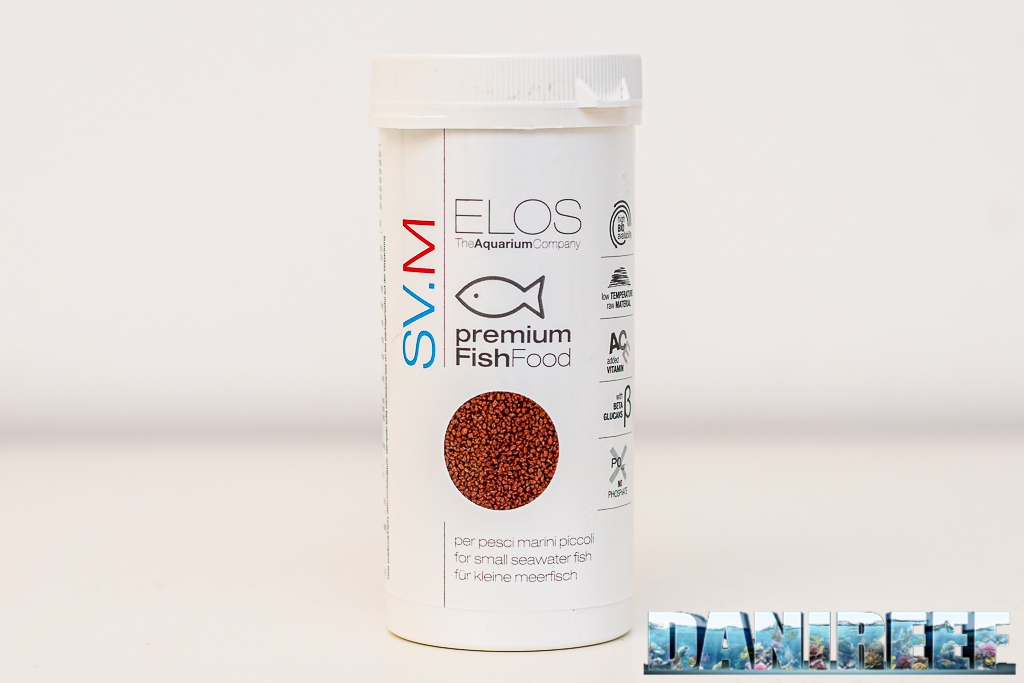
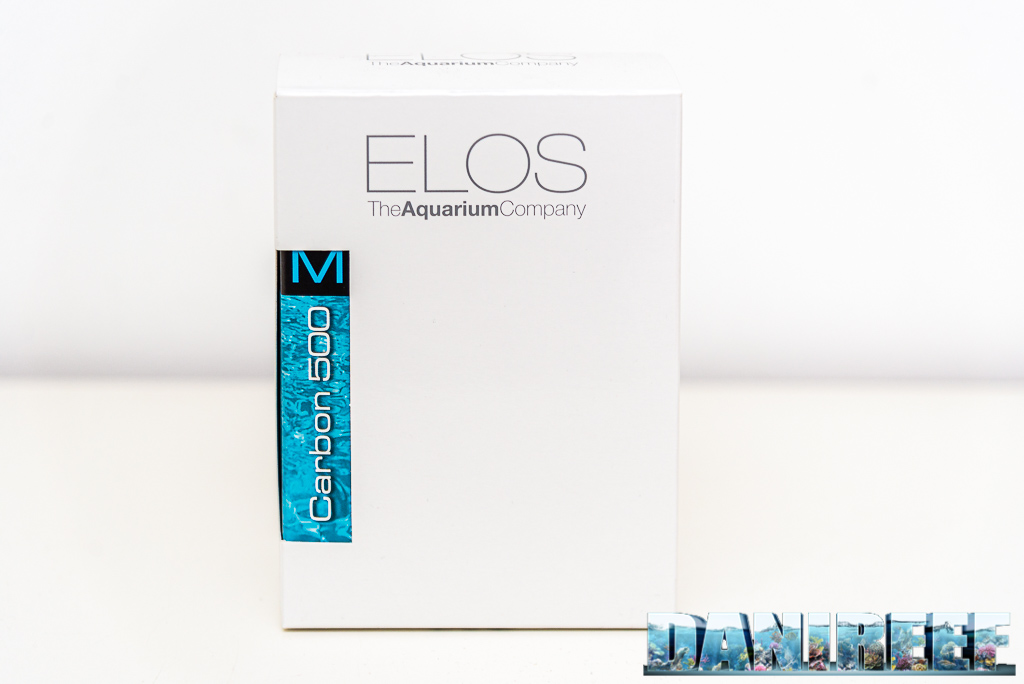
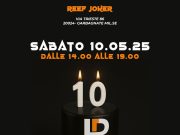


cavolo, da questi test (anche se ufficiosi) la E-power ne esce proprio bene… certo bisognerebbe vedere bene la potenza nello spazio per capirme l’effettiva portata, ma da quello che sembra anche in questo l’e-power sembra messa bene…
cmq test interessantissimo, le e-power secondo me sono ottime rivali dei lumenark, anche considerando il prezzo…
Danilo, thats a great post! I own LumenArc reflectors.. .and so far I am really happy with them. But its also great to see what else is good.
[…] links that can show some pictures and comparison about it: Pictures in my blog about ELOS ELITE Comparison about PLL – HQI and LEDs (ELOS ELITE) ELOS Elite has 18 leds with high intensity of 3w per led, 64w of consume and intensity of one HQI […]
Notevole differenza, veramente…direi che per completezza sarebbe interessante fare anche un ragionamento sui costi iniziale e poi sui costi di esercizio, cosa da capire quanto può essere il vantaggio in termini di euro in periodo di…4 anni ad esempio.
Sicuramente l’e-power ha dalla sua l’estetica, perchè il lumenarc prevedere un “accrocchiamento” non indifferente per l’acquariofilo e il suo salotto.
Sarebbe bello un giorno disegnare anche una “mappa” della luminosità a seconda della distanza dal centro della parabola, per vedere quanto si perde allontandosi
[…] mas informaci
[…] Also, our friend Danilo (www.danireef.com) performed a line of tests on similar reflectors. His findings are also interesting. You can read about it here. […]
[…] Aquatics is the only store, let alone hobbyist, to have the E-Power/Manta Combo in the Americas. Lumenarc III vs E-Power vs E-lite Vs Pl : DaniReef Covers go on the tank at night, not worth losing my babies. Good call, noone else has noticed – […]